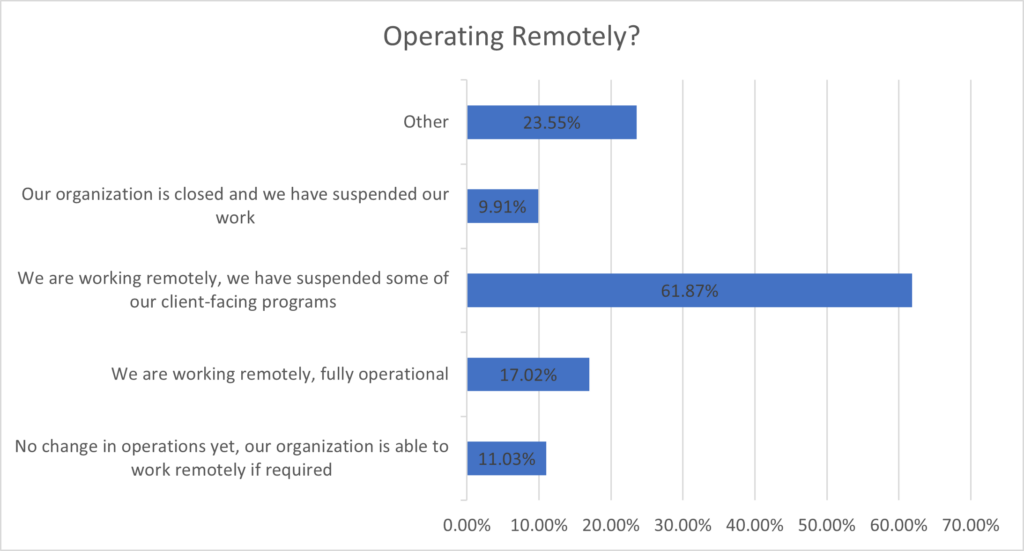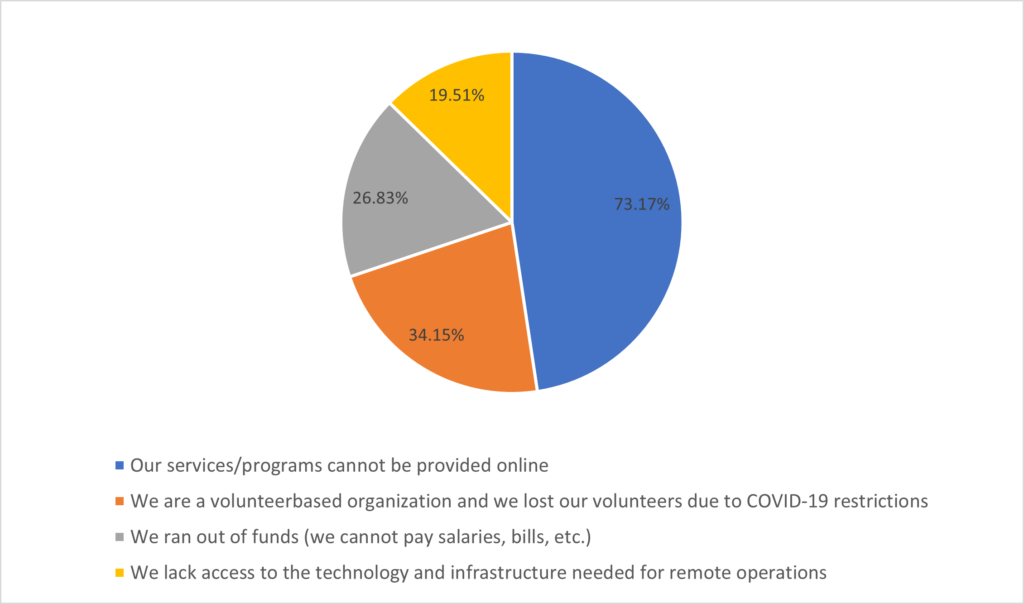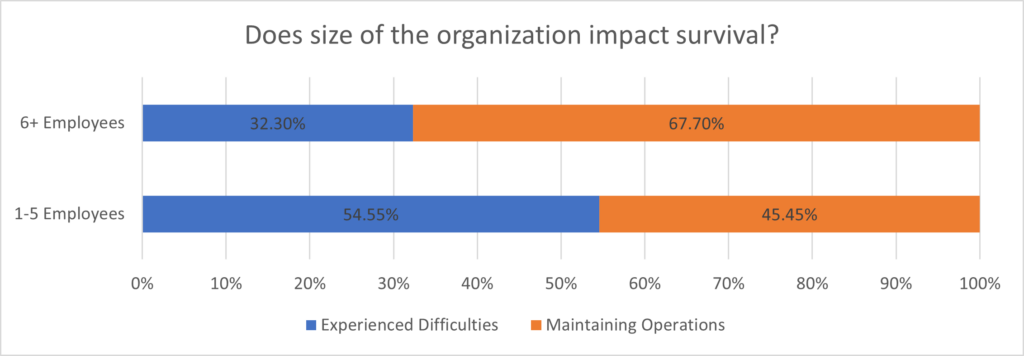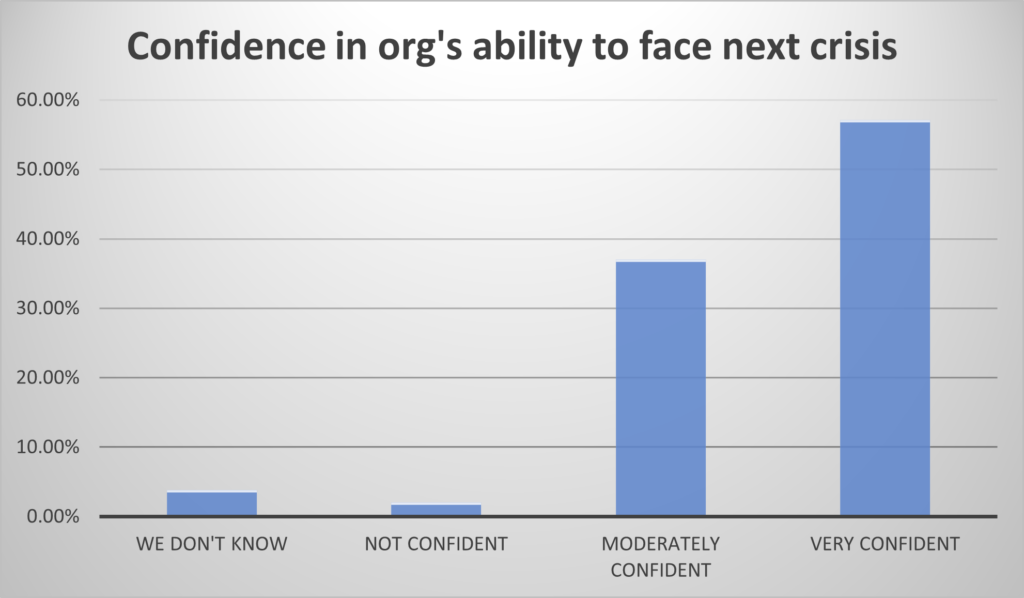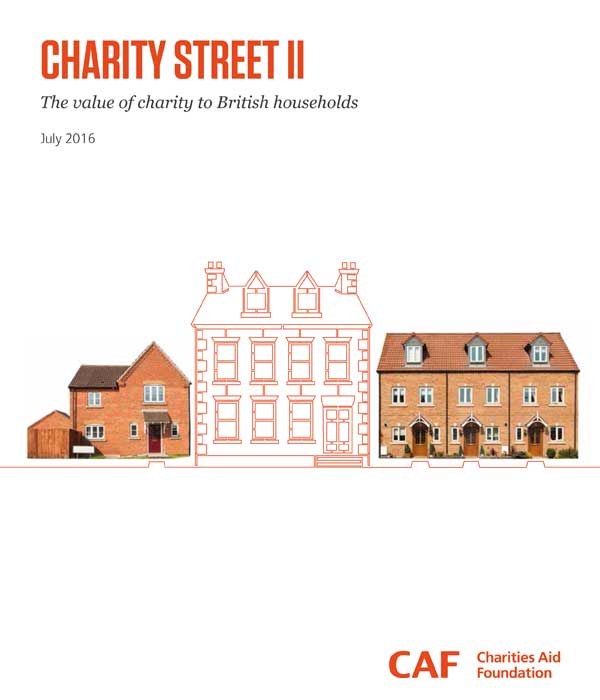It hasn’t been too difficult to find articles in the press about the success or failure of companies to survive (or, indeed, thrive) during the past 18 months, but what about nonprofits? How have they fared? And for the ones that have been successful, what has been their secret? This week my colleague Heather Willis does a fantastic job of walking us through a series of reports from the Charities Aid Foundation which has surveyed nonprofits across the globe multiple times during the Covid19 pandemic to discover and share the game plan for resiliency in our sector. ~Helen
When the World Health Organization declared COVID-19 a global pandemic in March 2020, Charities Aid Foundation (CAF) America set out on a mission to document the impact of the crisis on nonprofits worldwide. CAF has produced nine surveys and reports since, which represented the voices of 3,500 organizations operating in hundreds of countries and representing 15 causes.
These reports take account of charities around the world that have been performing their duties under extreme pressure. While many organizations have had to close in the last year due to new problems posed by the COVID-19 virus, others that have remained open have showed amazing tenacity and persistence in the face of new challenges.
What CAF found through this research is encouraging and uplifting. There was an expansive picture of persistence, humility, compassion, and empathy. The pandemic has had the counterbalancing impact of bringing the worldwide community closer together for a purpose that transcends borders and cultures, at a time when many people are feeling socially isolated.
In the Beginning
The vast majority (94.84%) of the respondents’ countries imposed coronavirus related restrictions that had an immediate impact on the organizations.
CAF reported in the first survey that 67.93% of the respondents saw a decrease in funding and reported difficulties in reaching donors, while 33.97% indicated an increase in operational costs. More than half were unable to fully meet the expectations of those they serve due to staffing limitations (48.58%) and system-challenges (37.57%). Restrictions on travel, a key programmatic element for many organizations, affected 63% of the respondents’ operations.
Despite the serious challenges, 90.10% of respondents continued to serve their communities. Although they had to suspend certain activities, almost two thirds of the organizations surveyed (61.87%) continued their operations remotely and 28.23% maintained full operations (11.03% working in office and 17.20% working remotely).
Volume 5 reports that the majority of responding organizations, 97.16%, were able to maintain their operations, and another 2.84% were not operating at that time. While the data suggests a marginal improvement compared to the Volume 3 survey in June when 92.47% respondents were operating, the organizations that had to close down during the past months were poorly represented among current respondents.
Of those that closed operations or some programming, the majority indicated the incompatibility of their services and programs with online delivery as their principal reason.
In one three-month time frame, 9.98 percent of surveyed organizations did not receive any money, and many were struggling to meet rising demand for their services. Individual donations continued to be the primary source of income for more than 70% of the organizations surveyed. Since the previous study, the number of groups receiving corporate funding climbed by 10.41%. Subsidies from the government also helped to mitigate the crisis’s harmful consequences. Since the previous survey, the number of groups getting government funding also climbed by 12.50 percent.
Charities had to adapt quickly to constantly shifting demands and donor interests promulgated by the pandemic. Normal fundraising channels such as special events and annual campaigns were closed off due to social distancing regulations. Charities that were nimble enough to shift all or most of their fundraising to online portals at their websites fared better.
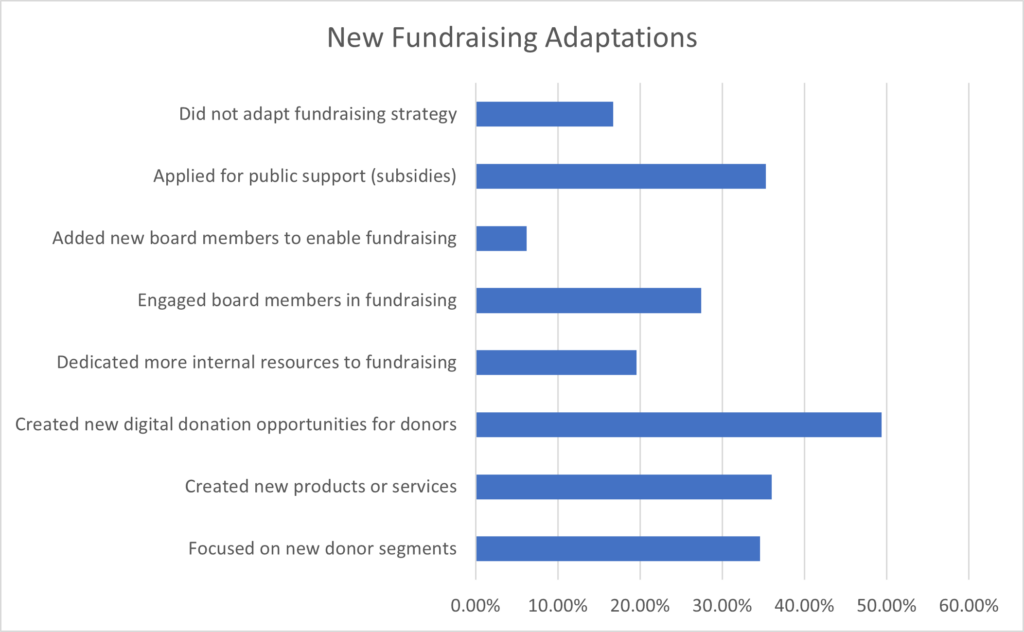 In a decidedly challenging task, the Volume 5 survey asked respondents to rate the most critical skills for success during those months.
In a decidedly challenging task, the Volume 5 survey asked respondents to rate the most critical skills for success during those months.
In answer to the question “What skillsets were most useful to your organization during the months impacted by the coronavirus pandemic?” respondents ranked skill sets as follows:
- COMMUNICATIONS (telling your story, connecting with your stakeholders)
- FUNDRAISING & DONOR RELATIONSHIP MANAGEMENT
- FINANCE (effective fiscal management, strategy, contingency planning)
- TECHNOLOGY (creating virtual networks, developing apps)
- EXECUTIVE MANAGEMENT & BOARD OF DIRECTORS
- NETWORKING
To deal with the new problems, an overwhelming number of responding organization were able to design and implement creative ideas and activities. Ninety-seven percent of responders agreed that innovation is necessary.
Large organizations (with 21+ employees) were roughly twice as likely to report that they were surviving or thriving than small organizations (1-5 employees). Smaller organizations were more likely to face limited staffing resources due to illness and lock-downs. Organizations with five and fewer employees are 56.5% were more likely to say that they were “struggling” as a result of the COVID-19 pandemic, as opposed to all other larger organizations surveyed.
Currently – Unfortunately not Post-Pandemic
Charities responding to the survey had many things in common, but three strong themes emerged: smaller organizations have had a more difficult time; the way charities fundraise has had to fundamentally change; and many organizations have adapted to view disaster and crisis planning as a core part of good charity governance.
Given their tenacity during the epidemic, over 64% of respondents are confident in their capacity to continue operating indefinitely under present conditions.
Organizations were asked the question “How confident are you in your organization’s ability to successfully face the next crisis?” Their answers were:
Over the course of CAF America’s research, they summed up their observations in Volume 8 and have detected six thematic areas to a charity’s ability to survive such a significant interference with their operations, finances, and staff.
Technology
There is a direct correlation between organizational resilience and the ability to adapt to online tasks that will remain the case post-pandemic. Key areas of improvement in resilient organizations included fundraising through digital technology, identifying digital tools to better connect with stakeholders, formulating digital strategies, and enhancing online programs and service offerings.
Communication
Improved communication is necessary for fundraising and storytelling to entice more support, engaging impact reporting, communications with non-digital and other stakeholders, and video presentation to improve outreach. The trend towards more cost-effective communication on social media channels and through online newsletters and reports is likely to continue post-pandemic.
Fundraising
The pandemic has highlighted the fundraising issues that smaller charities confront when their entire workforce is focused to meeting the growing requirements of their recipients. Sixty-five percent of the nonprofits unable to devote resources to creating and implementing new fundraising activities had fewer than twenty staff.
Finance
Areas critical to charities’ long-term success include building and sustaining financial reserves, strategic planning, contingency planning, and developing a risk management framework.
Leadership
While the majority of charities have faith in their leaders, they still need to enhance their skills and strategy. Nearly 60% of the charities polled said they wanted to improve their change management skills both during and after the crisis. Strategic planning, developing crisis-resilient teams, organizational mental health and well-being, and effective internal communication and staff engagement are among the other abilities that need to be improved.
Diversity, Equity and Inclusion
To strengthen their long-term strategy and build resilience, charities recognize the importance of incorporating DEI into bigger talks about global philanthropy. The pursuit of DEI to develop more effective organizational and programmatic outcomes is essential for social progress.
Donors are showing an increased commitment to flexibility while nonprofits now understand that impactful philanthropy requires collaboration, flexibility, commitment, and streamlined progress measurement strategies.
As never before, non-profits are being asked to put resilience into practice. Nonprofits will move forward from being aware of the new normal to clarity of renewed purpose, and then to taking deliberate action, as a result of the dialogues taking place today between staff and boards. They will be focused on instilling energy, encouraging renewed spirit and re-dedication to mission, and exhibiting, in word and deed, an increasingly positive attitude toward mission.
Further reading
Nonprofits show resilience and initiative during second year of pandemic, University of Washington News, December 14, 2021
Is your organization thinking about continuing working remotely? Some things to ponder are listed in this Nonprofit Times article, “Remote Possibilities – What Comes After Zoom?”

